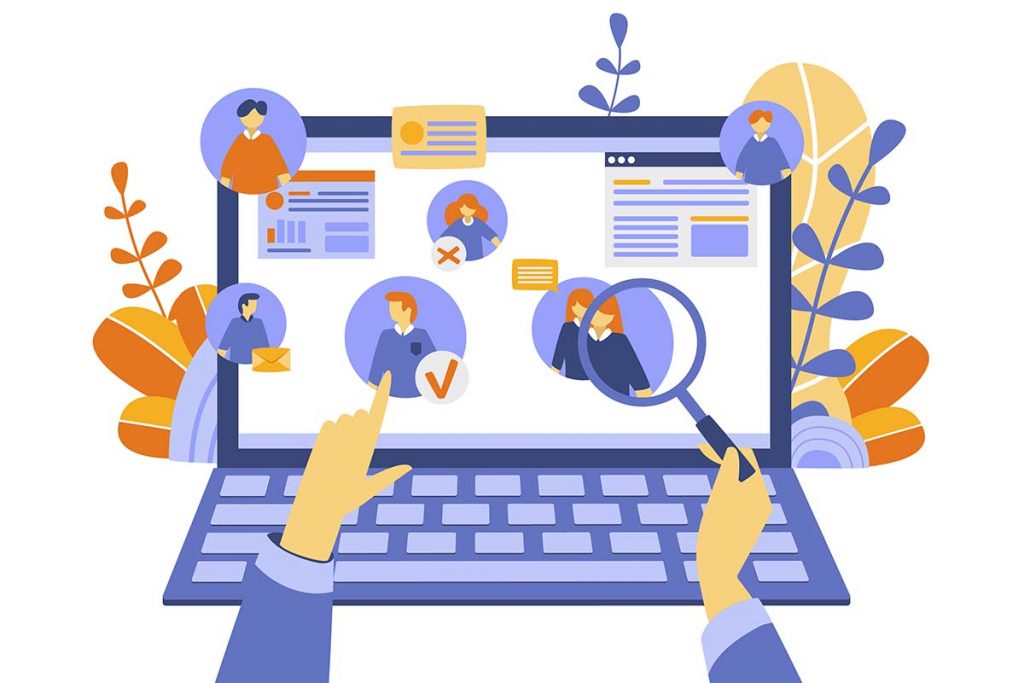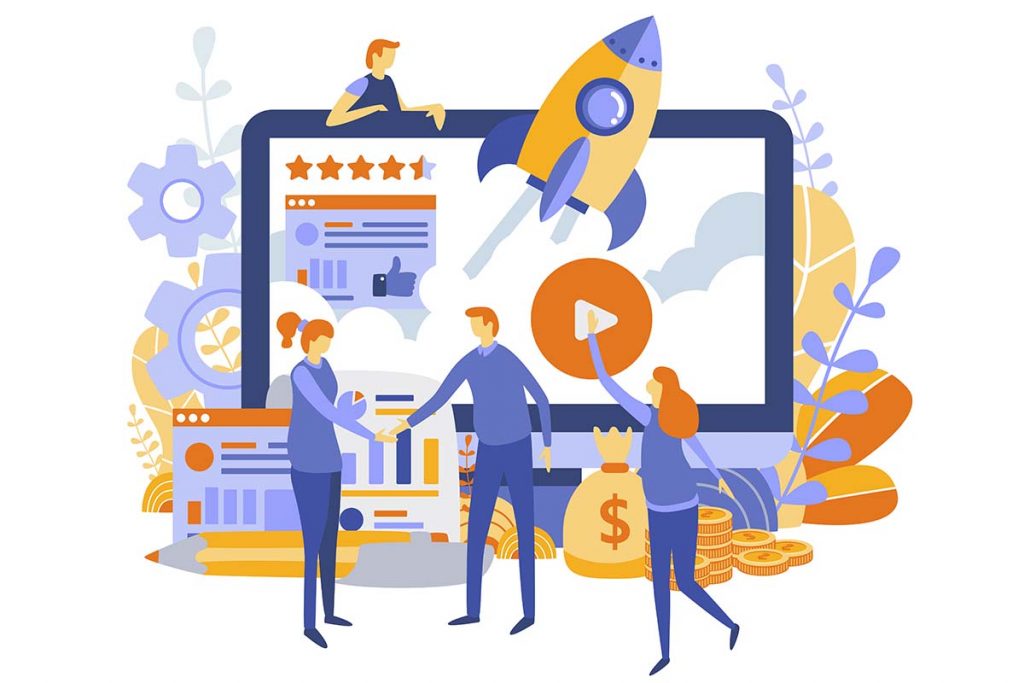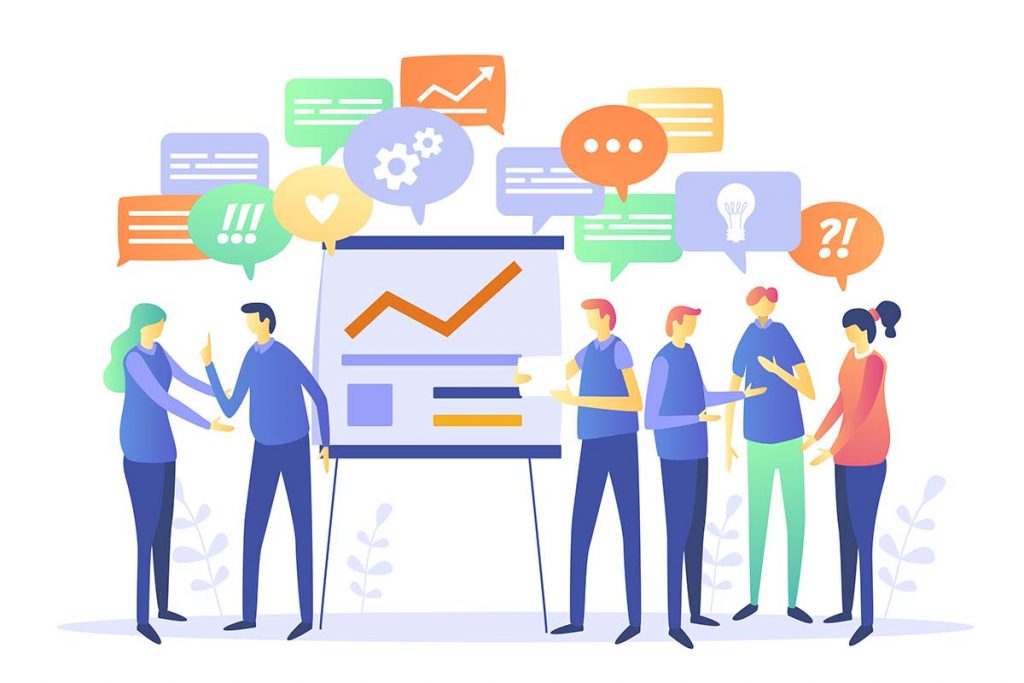The 5 stages of the customer journey explained
The customer journey refers to a customer’s interactions with a brand before, during, and after a purchase. Companies that map out their customer journey increase their chances of attracting, engaging, and converting customers.
This guide will introduce you to the five stages of the customer journey. You will also receive guidance on creating a customer journey map for your business.
Continue reading for a basic overview of the customer journey according to inbound marketing, or jump straight to the customer journey map below!
What is the customer journey?
The customer journey refers to the various steps a customer takes before and after buying a product or service. It includes every interaction they have with the brand, from the first contact to the purchase itself.
By mapping out the customer journey, companies can streamline their marketing efforts and improve customer experience. In inbound marketing, the customer journey is typically divided into five stages: awareness, consideration, decision, retention, and advocacy.
Benefits of defining your customer journey
Improve content marketing: Tailor your content to match the different stages of the customer journey. Knowing how awareness, consideration, and decision content differ can work wonders for your content marketing efforts.
Increase conversions: Explore the customer journey to identify when potential customers lose interest. Figure out where they drop off and why. Then tweak and optimise to ramp up your conversion rates!
Enhance customer satisfaction: The customer journey provides you with insights into your customers behaviour, preferences, and challenges. Armed with these insights, you can fine-tune your products or services to suit your target audience. The result? A better user experience and happier customers.
What are the five customer journey stages?
1. Awareness
In the awareness stage, customers start realizing they have a problem. Awareness content focuses on highlighting their pain points and guiding them to identify the issue.
2. Consideration
Now that customers are aware of their problem, they’re actively seeking a solution. Consideration content is about helping them solve their problem without directly selling them on a specific product or service.
3. Decision
During the decision stage, customers need to take action and choose the solution best fitted to solve their problem. Decision content should emphasise your unique selling points, and make it easy for customers to select your product or service over the competitors.
4. Retention
Once a customer has made a decision and chosen your product or service, it’s crucial to focus on retention. Retention involves nurturing the ongoing relationship with your customer.
This stage is about ensuring that your customers continue to find value in what you offer, remain satisfied, and stay engaged with your brand.
Effective retention strategies can include providing outstanding customer support, consistently delivering value through engaging content, and tailoring personalized experiences to foster long-term loyalty.
5. Advocacy
Advocacy is the final stage of the customer journey and perhaps one of the most rewarding. Customers who have had a positive experience and received value from your products or services can become your advocates.
They willingly share their positive experiences with your brand, products, or services with others. This can include writing testimonials, referring new customers, or promoting your business through word of mouth and social media.
Advocacy is a powerful driver of brand awareness and trust, as it relies on genuine, word-of-mouth recommendations from satisfied customers.
Here’s what a B2B customer journey can look like:
Awareness: The company faces a problem – they’re losing sales consistently. They wonder, “Why is this happening?” and realize that they lack a structured way to follow up on leads.
Consideration: Now, they’re in search of a solution. They think, “What can we do about this?” and it becomes clear: it’s time to invest in a CRM system.
Decision: The company embarks on the journey of exploring various CRM systems. They ask themselves, “Which CRM aligns best with our needs?” This stage involves going through reviews, testing free versions, evaluating features, and comparing prices.
Retention: After successfully implementing a CRM system, the retention phase begins. Now, it’s the CRM provider’s responsibility to maintain a strong relationship with the company, ensuring they continue to find value in the system and remain satisfied.
Advocacy: Finally, after benefiting from the CRM system, the company can become advocates by sharing their positive experiences with the provider and recommending the system to their network.
What is a customer journey map?
A customer journey map is like a visual roadmap of a customer’s interactions with a brand. It shows all the stages and touch points, starting from when they first hear about a product or service, all the way through to what happens after they make a purchase.
Key elements of a customer journey map:
- Buyer personas: Fictional representations of a company’s ideal customers.
- Customer touch points: The different interactions a customer has with the brand, including activities like reading a blog post or opening an email.
- Emotional states: The varying emotional states of the customer during different stages of the customer journey.
- Pain points: Challenges or issues that customers may encounter throughout their journey.
Customer journey maps are valuable tools for businesses, enabling them to gain a deeper understanding of and empathy for their customers. These maps help identify areas for improvement and opportunities to enhance the overall customer experience, from the initial engagement to long-term relationships.
They are commonly used by marketing, customer support, and product development teams to align their efforts with the customers’ needs and expectations.
How to create a customer journey map
- Gather data from current customers.
- Analyse website interactions.
- Seek customer insights from support and sales.
- Research customer search terms.
- Enhance the overall customer experience.
1. Collect relevant customer data
To define your unique customer journey, begin by gathering customer data from the following sources:
Existing customers: Collect data through interviews or surveys, covering all phases of the buying process. Inquire about how they first discovered the company’s products or services, why they decided to make a purchase, and the challenges they encountered along the way.
Analytical tools: Use tools like Google Analytics or Hotjar to gain insights into customer interactions with your company. For example, identify the most visited pages on your website, evaluate the performance of various calls to action (CTA), and determine the average time visitors spend on each page. This information is invaluable for assessing the relevance of your website’s content and its effectiveness in meeting its objectives.
Customer support and sales: Reach out to these departments to gather valuable insights into common customer issues, complaints, and questions. Identify what works well in the customer journey and pinpoint areas where improvements can be made.
2. Define the customer journey
The next step is to outline the customer journey from the moment a customer first engages with your brand until they decide to make a purchase. Your goal is to comprehend how customers initially discover your company and what drives their decision to buy your product or service.
Define the customer journey specific to your customers across the different stages: awareness, consideration, decision, retention, and advocacy.
Once you have a grasp of how the customer journey unfolds, it’s time to chart customer behavior. Your objective is to understand what the customer is thinking in each phase and how it influences the decision-making process.
Questions to define the customer journey:
What emotions do customers experience during the different phases of the journey?
Customers aim to solve a problem, which may lead to feelings such as frustration, concern, relief, or even joy. Define how customers’ emotions change throughout the journey and what triggers these emotions.
What actions do customers take during the various phases of the customer journey?
It’s crucial to note the actions customers take along the path to purchase. Some examples of actions include downloading white papers, subscribing to newsletters, or engaging with the company on social media. Map how customer behavior evolves through every stage of the journey.
Where do customers seek information?
Naturally, you want to discover where customers look for answers to their questions and problems. Do they turn to Google, social media groups, or industry publications? Identifying the forums where customers are active is essential to avoid missing valuable opportunities to reach out with relevant content.
3. Improve the customer experience
After mapping the customer journey, it’s time to think about how to enhance your ability to maintain the customer’s interest throughout the journey.
You’ve probably pinpointed certain points where customers tend to disengage. What strategies can you employ to keep customers engaged and motivate them to continue the journey?
Tips for improving the customer experience:
Adapt your content strategy
Tailor your company’s content to the different phases of the customer journey. Use your newfound insights to create relevant content that addresses customer problems.
Make it easier to buy
Your customer journey map can reveal whether customers find it easy or challenging to purchase your products or services. In the B2B realm, sales cycles are often longer and the buying process can be more complex compared to B2C.
One common mistake companies make is lacking a clear call to action that encourages the customer to move from decision to purchase. Examples of CTAs include “request a quote,” “contact us,” “buy now,” or “sign up.”
Implement marketing automation
Companies can save resources and increase conversions by using marketing automation tools like HubSpot. If your customers tend to get stuck in the buying process, marketing automation can help move them forward.
Automated lead nurturing sequences are an effective way to engage leads and eventually convert them into customers.
Businesses can gain significant advantages by mapping both potential and existing customer interactions with their brand, spanning from awareness to the decision stage. By customizing their marketing strategies to the different phases of the customer journey, companies can foster stronger relationships with customers and convert more relevant leads.
Need help creating content that fits into the various phases of the customer journey? Contact me, and I’ll solve it for you.






